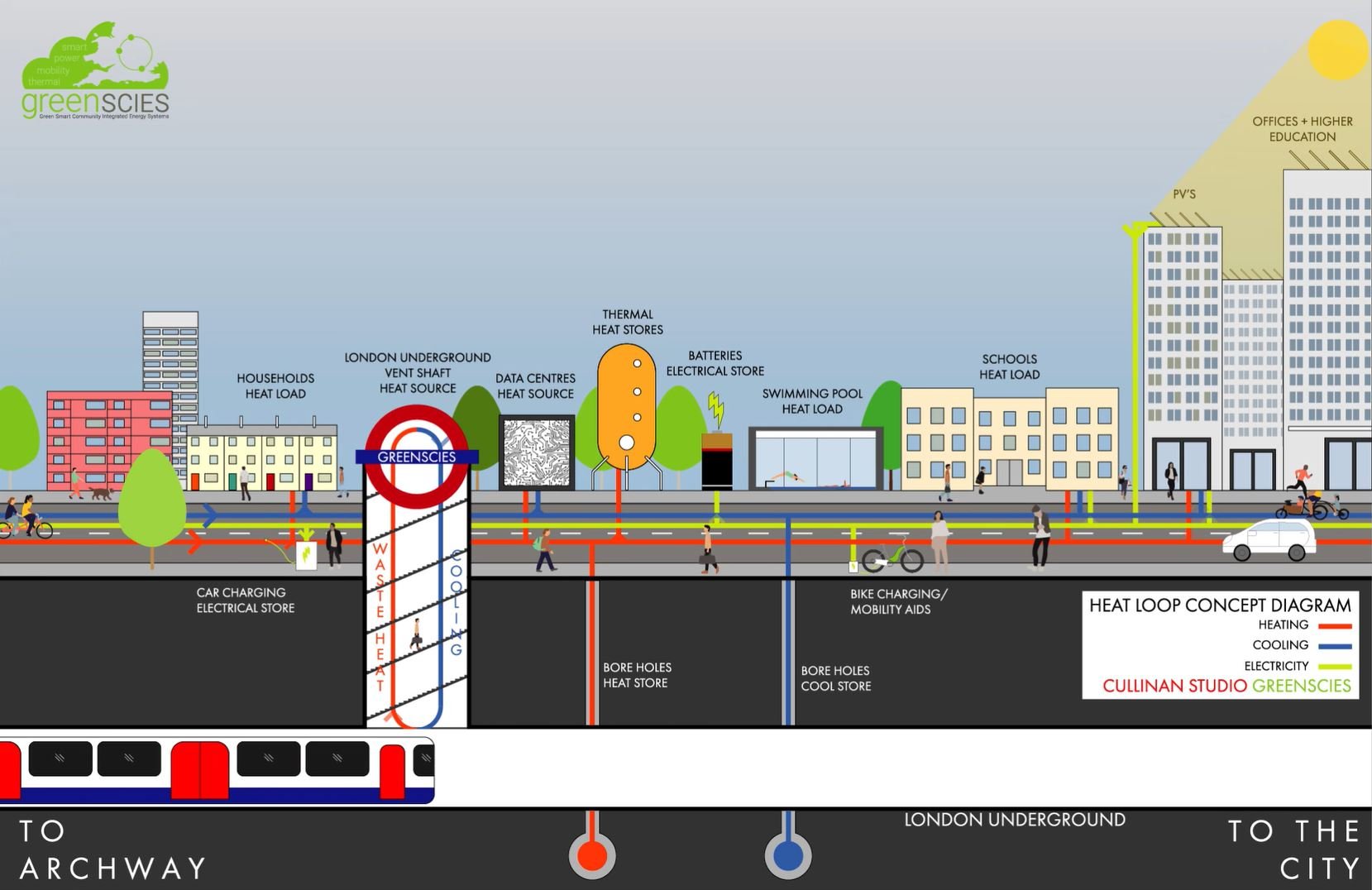Green SCIES Islington
GREEN SMART COMMUNITY ENERGY SYSTEM
Harnessing waste heat from data centres to power 33,000 homes is a radically inclusive and sustainable idea.
INSIGHT
In Islington, there is a feeling of disconnection within the community. More than 1 in 10 households live in fuel poverty, and many more feel the effects of the energy and climate crises. Islington Council wants to respond boldly to address the need for clean, affordable energy and a more vibrant community.
IDEA
Collaborate with a diverse ecosystem of partners and residents to evaluate and analyse how energy is used within the community and accelerate a clean and just energy transition with opportunities to optimise, share and generate resources that improve the quality of life for everyone.
What will the project deliver?
GreenSCIES is a revolutionary smart local energy system that will take waste heat from the London underground and local data centres to deliver low-carbon heating, cooling, power and an EV charging network to an estimated 33,000 homes and 70 businesses in the London Borough of Islington.
THE SOLUTION
This community energy network integrates different technologies, including:
Heat pumps
Solar PV
Battery storage
EV charging points
IMPLEMENTATION
The Green-SCIES network design considered renewable sources of energy (geothermal, solar PV and water source heat pumps) and secondary thermal sources of energy (waste heat recovery from the London underground, data centres, sewers, substations and a supermarket) combined with a smart district thermal network to distribute low-carbon heating and cooling.
Options were evaluated, and then optimised, using whole-system modelling and real-life community energy data. An integrated power, mobility and heat network was designed with community-scale water source heat pumps at its heart to harness and distribute local industrial waste heat, whilst delivering an 80% reduction in carbon emissions.
This community-centred smart energy grid will use the London aquifer as an inter-seasonal thermal energy store to capture, store and redistribute low-grade energy between buildings -the energy generated in one building can supply another building depending on local demand. It’s a place-based approach which seeks to minimise waste and places heat energy at the heart of the community. It will deliver an 80% reduction in carbon emissions.

IMPACT
Helping Islington Council reach net zero by 2030.
Waste heat powering 33,000 homes and 70 offices.
Reducing emissions by 80 percent.
Reducing energy costs to tackle fuel poverty.

